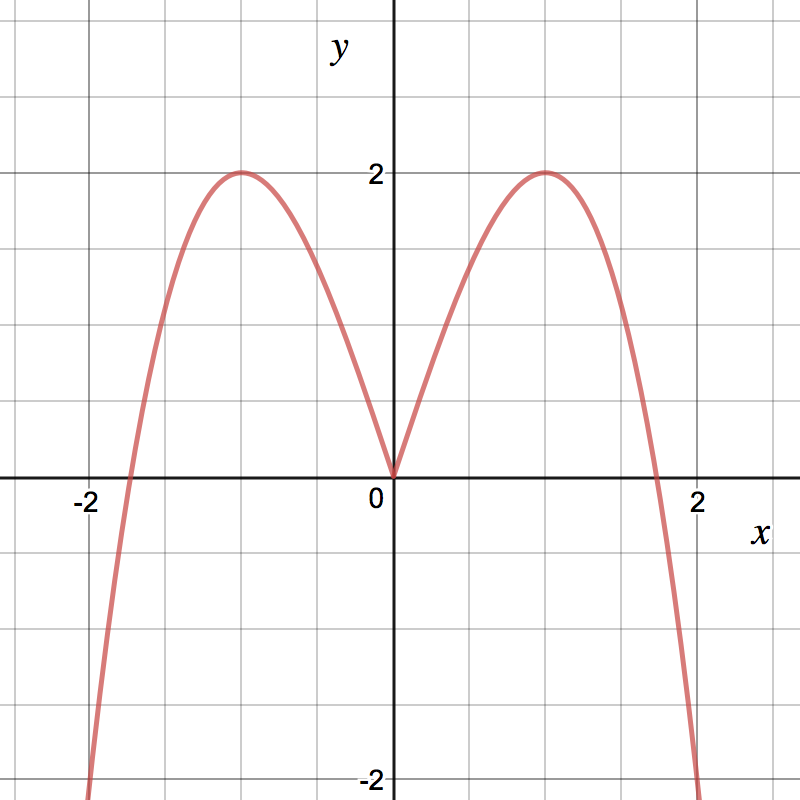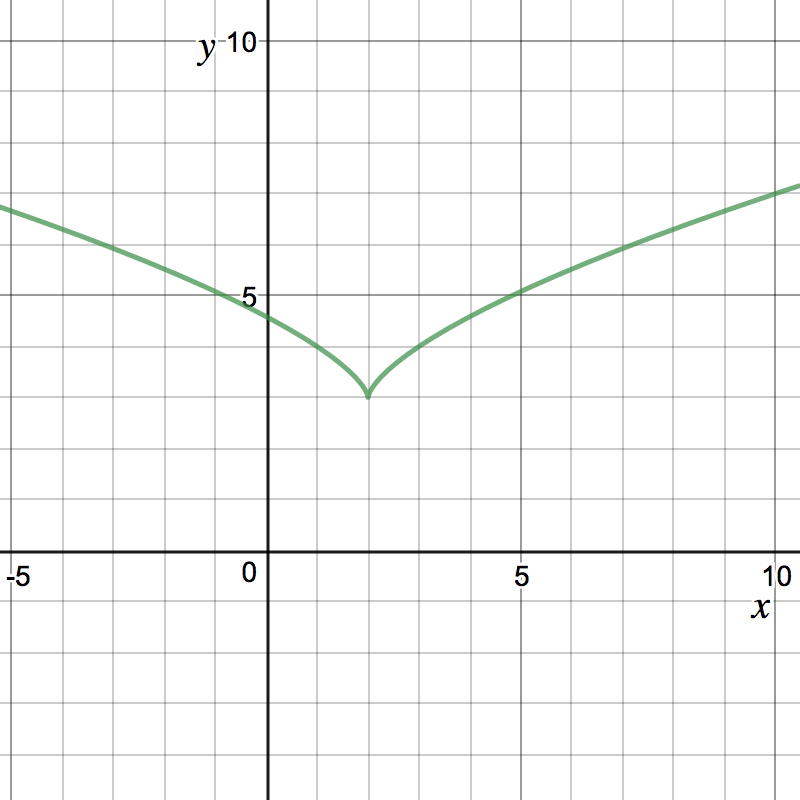Recap Video
Take a look at the following video which recaps the ideas from the section.
_
Example Video
Below is a video showing a worked example.
Problems
There are a lot of theorems and definitions in this section, so let’s recall all of them:
If has a local maximum or minimum at , then either or does not exist (i.e.
is a critical point of ).
If is a continuous function on the closed interval , then has an absolute
maximum and an absolute minimum on the interval .
Consider . Which of the following describes the full domain of ?
All real
numbers All numbers with All numbers with
Procedure 1. To find the absolute maximum and minimum values of a continuous function on the closed interval :
- Find the critical points of on (i.e. inside the interval)
- Plug in these critical points and endpoints into to get the highest and lowest -values.
Find the absolute maximum and minimum values of on the interval .
First, note that is continuous on the interval . Let’s break this into
steps:
- Step 1: We can find critical points inside the interval. Taking a derivative, we get This derivative does not exist at , but that is ok in this case because is one of the endpoints (and we only care right now about the interval ). Setting , we get one critical point at , which is inside the interval.
- Step 2: We found is a critical point in the previous part. We also have and as endpoints. We plug these three points into : This tells us that the maximum value is at , and the minimum value is at .

